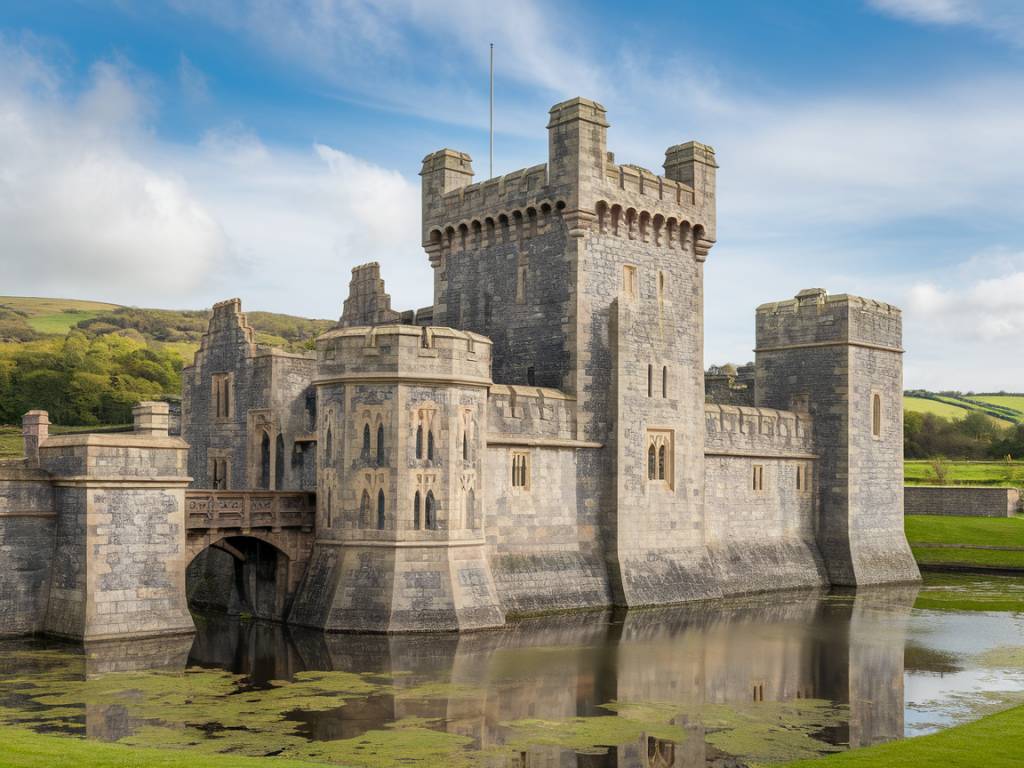The Rise of Welsh Castles: A Tale of Power and Legacy
Wales is often celebrated for its breathtaking landscapes, lyrical language, and captivating traditions. But nestled within its rolling hills and rugged coastlines lies another testament to its rich history—castles. With more than 600 castles dotting its landscape, Wales boasts one of the highest concentrations of castles in Europe. Have you ever wondered how these majestic strongholds came to define the region and its people?
Norman Beginnings: The Birth of Castles in Wales
The story of Welsh castles begins with the Norman Conquest of England in 1066. Determined to extend their control into Wales, the Normans brought with them a new architectural innovation: motte-and-bailey castles. These early fortifications were built quickly using earth and timber, serving as both military outposts and administrative centers.
One of the earliest examples is Chepstow Castle, strategically perched above the River Wye. Constructed in 1067, it wasn’t just a fortress but a statement of power. Can you imagine the awe these structures must have inspired in the local population, who had never seen anything quite like them?
Over time, these timber castles were replaced with stone. The enduring strength of materials like limestone and sandstone ensured these castles could weather not only attacks but also the test of time. Many of these early Norman castles still stand today, bearing silent witness to the turbulent beginnings of their era.
The Age of Edward I: Beacons of Imperial Authority
Fast forward to the late 13th century, and Wales was a land in turmoil. The native Welsh princes, under figures like Llywelyn ap Gruffudd, had resisted English rule with fierce determination. However, this resistance came to an end during the campaigns of King Edward I.
Edward embarked on an ambitious castle-building program, known as the “Iron Ring of Castles,” to secure his conquest of Wales. These architectural marvels, including Harlech, Caernarfon, and Conwy castles, were not just military strongholds; they were symbols of subjugation and dominance over the Welsh people.
Caernarfon Castle, for example, was designed to evoke the grandeur of Constantinople’s Theodosian Walls, linking Edward’s reign to Roman imperialism. Did you know it’s also where Prince Charles was formally invested as Prince of Wales in 1969? This connection between past and present highlights the enduring importance of these historic structures.
Welsh Castles as Cultural Icons
As the centuries passed, Welsh castles evolved from instruments of war to symbols of heritage. By the Tudor period, many of these strongholds had fallen into disuse, their military importance diminished by changing technologies and political landscapes. Yet their cultural significance only grew stronger over time.
Take, for instance, the romantic rediscovery of Wales’ medieval ruins during the 18th and 19th centuries. Poets like William Wordsworth and painters like J.M.W. Turner were inspired by their brooding silhouettes and dramatic settings. The ruins of these castles became canvas and muse, capturing the imagination of artists and travelers alike.
Today, castles like Harlech and Beaumaris are UNESCO World Heritage Sites, celebrated not only for their historical value but for their stunning integration into the natural landscapes of Wales. Visiting these castles is like stepping into a storybook where every nook and cranny echoes tales of knights, princes, and battles fought long ago.
The Secret Lives of Castles: Beyond Battles and Kings
While Welsh castles are often associated with grand narratives of conquest and power, they hold countless smaller stories of everyday life. Imagine bustling kitchens preparing feasts for noble banquets or courtyards filled with the chatter of blacksmiths, merchants, and servants. Did you know that Aberystwyth Castle once housed one of the earliest astronomical observatories in Britain?
In times of peace, these fortresses became centers of commerce and innovation. Owain Glyndŵr, the last native Prince of Wales, even transformed Harlech Castle into a royal court during his rebellion against English rule in the early 15th century. The walls of these castles have witnessed not just war but also celebrations, treaties, betrayals, and dreams.
Visiting Welsh Castles: A Journey Through Time
If you’re planning to explore Wales, its castles should be at the top of your itinerary. Not only do they offer a glimpse into the past, but each visit is a chance to immerse yourself in the breathtaking surroundings they occupy.
- Conwy Castle: Wander along its limestone walls and marvel at its sweeping views of the Conwy Estuary.
- Cardiff Castle: A blend of Roman, Norman, and Victorian architecture, located right in the heart of the capital.
- Carreg Cennen Castle: Perched on a cliff, its remote location and dramatic ruins make it a photographer’s dream.
- Harlech Castle: Climb to its battlements and imagine the courage of defenders who held their ground against invaders.
- Raglan Castle: A romantic ruin with beautifully preserved towers and gardens, perfect for a summer picnic.
Whether you’re interested in history, architecture, or simply seeking inspiration, there’s a castle in Wales waiting to captivate you.
Why Castles Matter Today
In a world of modern skyscrapers and glass facades, the castles of Wales stand as enduring reminders of our past—both its triumphs and its struggles. They are not just relics of a bygone era but living monuments that continue to inspire and educate.
Perhaps that’s why Welsh castles resonate so deeply. They are more than stone and mortar; they are a testament to the resilience, creativity, and spirit of the people who built and inhabited them. So, next time you find yourself wandering through Wales, take a moment to stand in the shadow of a castle. You might just feel the whispers of history calling your name.

